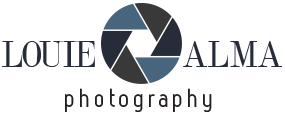This Free Advice May Save You Thousands
Protect your rights and thwart picture pirates, the outright thieves who cash in on your photographic talent. Here’s priceless advice from the founder of the company that has recovered more than $15 million from copyright infringements for photographers in 68 countries since 2014.
Nota Bene: This is not legal advice and Nico Trinkhaus is not an attorney. If you think your intellectual property rights may have been violated, please seek legal counsel.
No one likes having their photos, videos or other creative work products stolen and misused without compensation. When this happened to noted travel/destination photographer Nico Trinkhaus, he took it personally.
Together with his girlfriend (now wife) Daria, they cofounded PhotoClaim, a company that works with photographers and their legal teams to collect the revenue they deserve. More about PhotoClaim later.

How To Protect Your Creative Assets
Shutterbug asked Nico Trinkhaus for down-to-earth, concrete steps we all can take to protect ourselves. Here’s Nico’s advice, all based on his personal experiences.
“NEVER give the Raw files to anyone. No client and not even your lawyer. If anything, make a TIFF file export and hand over that exported file. That way, you can confidently prove your copyright by being the only person in the world who has access to your raw files.
“If you pursue an infringement case by yourself, make sure it’s a) archived in some web [cloud-based] archive and b) ask a friend or colleague to secure screenshots (rather than yourself) so you have a witness.
“If it’s misuse on social media, find a way (and secure evidence of it) to prove that a certain company is responsible for it. For example, show that their homepage links to that social media page.
“Publish with name and date (year) visible somewhere next to the photo—otherwise, in some countries, like Italy, where the copyright laws date back to the Second World War, your images may not be protected.
“Register your copyright in the US (regardless of where you’re from), otherwise it’s very hard to do anything about it if a US company steals your photo. But remember that in Europe you’re protected—even if you’re from the US and do not have your copyright registered.
“Make it clear on your website that rights are reserved, and ideally publish a pricing list.”
Just as an example, here is the legal notice Nico uses on his popular photography website, Sumfinity. Note that the wording reflects its European headquarters and may not be suitable for USA-based websites. Best way to find the legal language appropriate for your website? Ask your attorney, of course.
Copyright © 2010-2025 Nico Trinkhaus & Sumfinidade Unipessoal LDA
All images contained in this website are copyrighted by Nico Trinkhaus and Sumfinidade Unipessoal LDA (ZFM) and may not be distributed, modified, reproduced in whole or in part without the permission of the author. All rights reserved and all moral rights asserted.
Framing is forbidden.
Contact us for prints or licensing.
Privacy and Data Protection Policies & Imprint
Protected by PhotoClaim.
For A Deeper Dive
Nico and his wife regularly update an article that covers everything a photographer needs to know when taking a copyright case to court in Europe on their website Sumfinity.
Taking The Next Step
Shift into hyper-vigilance mode by connecting with PhotoClaim or a firm that performs similar service.
Currently, PhotoClaim is closed for new applications, but if you believe there’s a fit for your needs, you can join their waiting list by completing this form.
About PhotoClaim
Shutterbug asked Nico about PhotoClaim’s backstory. Here are his words.

How Did PhotoClaim Come About?
“When my photo of the Thunderstorm at Alexanderplatz in Berlin went viral in 2013, I landed my first press agency deal. I wanted to know who bought and published my photo so I could buy the magazines for my memories.
“However, it turned out that my agent did not license the majority of the uses I found. So I used the Google Image Search for all my published photos and created an Excel table. Turns out I found about a hundred commercial uses of my photographs. Among them were five-star hotels, airlines, TV broadcasting, and big travel agencies.
“This was when I knew I had to do something about it. If they had paid me for my work, I could have made a living from photography at that point. But just like that, they benefited from my work without any return for me.”
How Did You Set It Up?
“While I initially just looked to help myself and started to work with a lawyer in Berlin, I quickly realized after losing my first case that I need lawyers not just in Germany, but everywhere. As a single photographer, it’s difficult to get this done. Lawyers don’t take you seriously. So I started to approach friends to ask if I could monitor their portfolios. By representing multiple photographers and having more cases, we could get access to lawyers who would otherwise not be interested in working with us.
“Word of mouth got around, and more and more photographers wanted to join us. In 2014, my girlfriend (and now wife) Daria quit her job, and together we started to build PhotoClaim to help more and more photographers.
“The thing is, the more photographers protect their copyright, the less incentivized companies are to steal the photographs because they are less likely to get away with it. In the US, there are big penalties for copyright infringements—but in Europe, there is nothing. All we get is the licensing fee and a reimbursement of the legal costs. So for many companies, it’s simply the logical thing to do from an economic perspective. Why pay for licensing if you get caught only one out of a hundred times—and even then, all you have to pay is the licensing fee you had to pay in the first place?
“The collapse of licensing fees that we could observe over the past decade is a direct result of this system failure, unfortunately. So we find it important to stand up for photographers’ rights. Many more photographers could make a living from their passion if only the companies that need the images would start paying for them.”
How Prevalent Is Image Theft Worldwide?
“From experience with clients that work with stock agencies, we can say that for every license sold, you have about 80-100 copyright infringements.
“For the reasons mentioned above, the problem in Europe is much bigger than in the US. And that only counts commercial use, and it only looks at countries that have a legal system that actually works.
“Since 2014, PhotoClaim has recovered more than 15 million USD from copyright infringements for the photographers and worked on more than 31,000 cases for just about 700 photographers that we’ve worked with over the years. So yes, this is a big topic!”

View Nico Trinkhaus’s amazing photography portfolio when you visit Sumfinity.
Follow Nico on Instagram and Facebook.
Enormous thank you to our friend Zoe Hiljemark, a world-class publicity / visibility consultant for photographers, who made this story possible.
Nota Bene: This is not legal advice and Nico Trinkhaus is not an attorney. If you think your intellectual property rights may have been violated, please seek legal counsel.
—Jon Sienkiewicz






